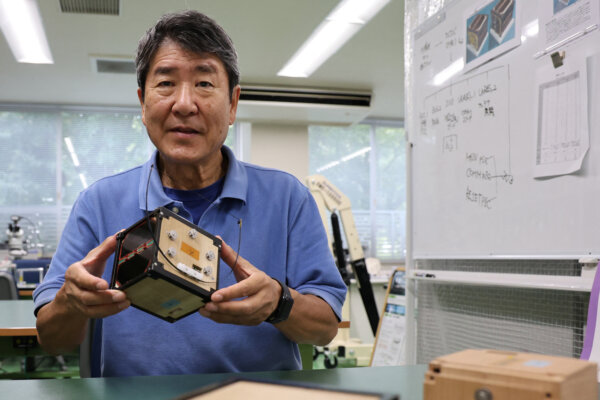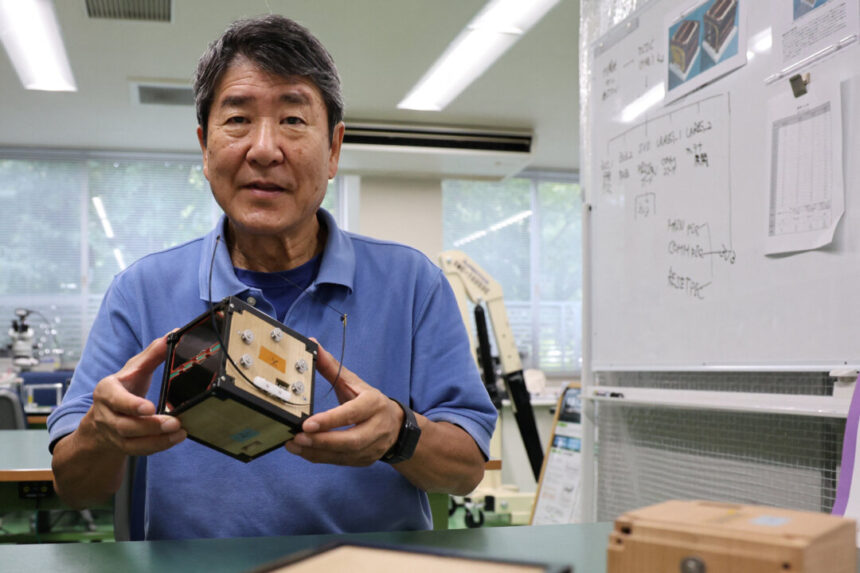
The World’s First Wooden Satellite Launched into Space
KYOTO—Japanese researchers have successfully launched the world’s first wooden satellite into space on Tuesday, marking a milestone in the use of timber in lunar and Mars exploration.
The satellite, named LignoSat, was developed by Kyoto University and Sumitomo Forestry. It will be transported to the International Space Station on a SpaceX mission and released into orbit approximately 250 miles above Earth.
LignoSat, which is named after the Latin word for “wood,” is a palm-sized satellite designed to showcase the potential of using renewable materials in space exploration.
Takao Doi, an astronaut and researcher at Kyoto University, stated, “With timber, a material we can produce ourselves, we will be able to build houses, live, and work in space indefinitely.”
The team behind LignoSat has a 50-year plan to plant trees and construct timber houses on the moon and Mars. The development of a wooden satellite certified by NASA is a crucial step in proving that wood is a viable material for space missions.
Professor Koji Murata from Kyoto University explained, “Wood is more durable in space than on Earth due to the absence of water and oxygen that would cause it to rot or catch fire.”
One of the key advantages of a wooden satellite is its minimal environmental impact when it reaches the end of its operational life. Unlike metal satellites, wooden satellites burn up upon re-entry into the atmosphere, reducing pollution.
Doi expressed his hope to collaborate with companies like SpaceX in the future, stating, “If we can demonstrate the success of our first wooden satellite, we aim to present it to Elon Musk’s SpaceX.”
Industrial Application and Space Testing
After conducting a 10-month experiment aboard the International Space Station, researchers determined that honoki, a type of magnolia tree native to Japan, is the most suitable wood for spacecraft construction.
LignoSat is made of honoki using a traditional Japanese craftsmanship technique that does not require screws or glue.
Once deployed, LignoSat will remain in orbit for six months, during which its electronic components will monitor how wood withstands the extreme conditions of space, including rapid temperature fluctuations.
The satellite will also assess wood’s ability to shield semiconductors from space radiation, making it potentially valuable for applications such as data center construction.
Kenji Kariya, a manager at Sumitomo Forestry Tsukuba Research Institute, emphasized the significance of wood as a cutting-edge technology for space exploration, stating, “Expansion into space could revolutionize the timber industry.”
By Kantaro Komiya and Irene Wang





